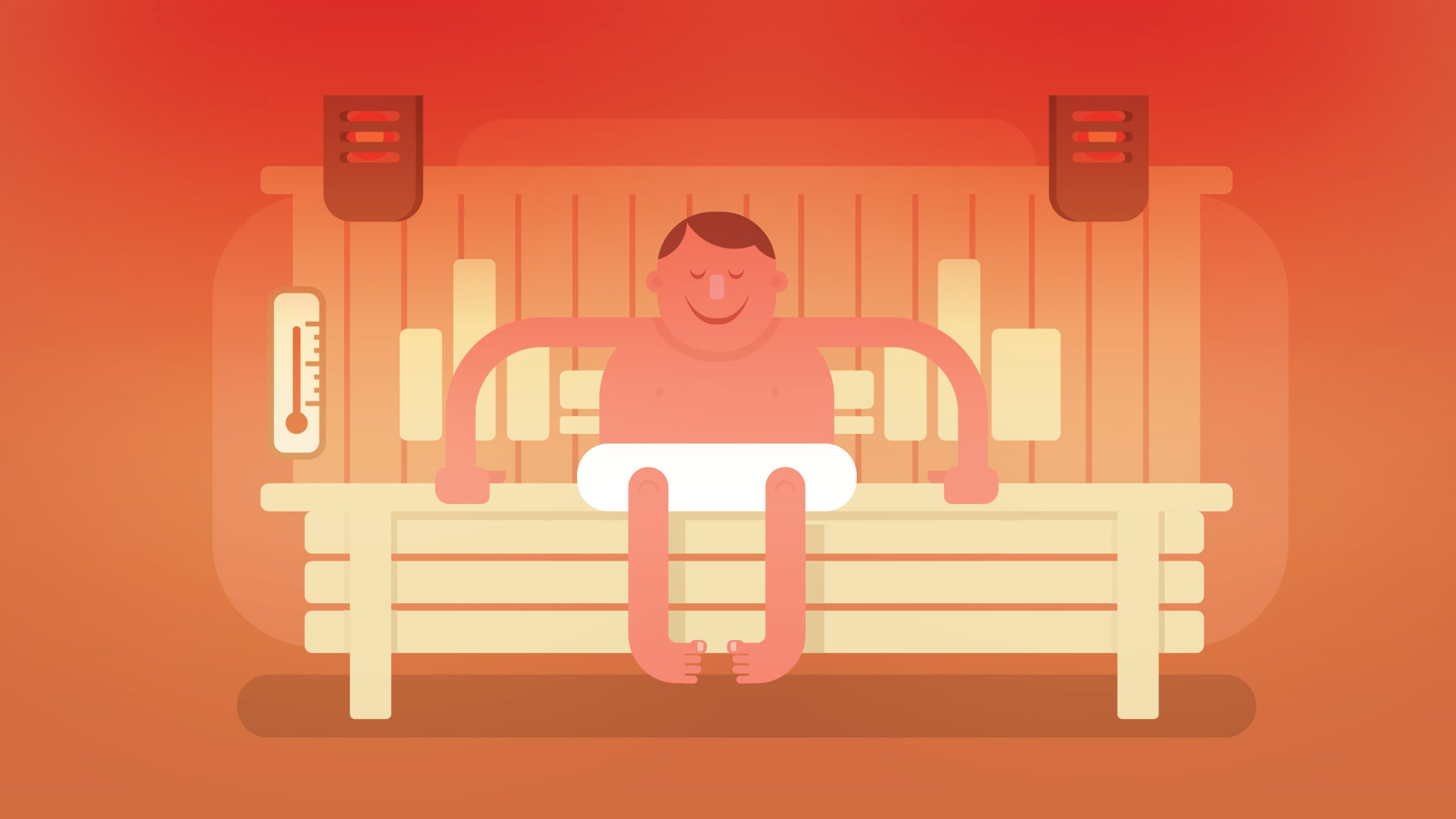
From the Jewish schvitz to Mesoamerican “houses of heat,” people all over the world have long associated a good sweat with a wide assortment of health benefits. And some of the latest research seems to support those ideas.
One long-term study of middle-aged Finnish men found those who spent time in a sauna 2-3 days a week enjoyed a 23% drop in their risk for a fatal heart disease or episode. The heart health benefits were even greater for men who sweated it out in a sauna more frequently.
“Sauna bathing leads to a significant increase in heart rate and reduction in total vascular resistance, thereby decreasing blood pressure,” says Dr. Ernst van der Wall, chief of cardiology at the Netherlands Leiden University Medical Centre.
In a recent editorial appearing in the Netherlands Heart Journal, van der Wall lays out the research in support of sauna bathing as a safe and salubrious habit for healthy people of all ages. He also says expert concerns about the safety of sauna bathing for those with heart conditions may be overblown. “Death in the sauna is a rare event, even in Finland where the frequency of sauna bathing is high,” he writes.
Still, the big questions surrounding sauna bathing’s safety have always centered on its occupant’s (and her heart’s) ability to withstand the heat. Traditional saunas use either wood or electricity to warm the air in a chamber to a temperature of 185 degrees, which many people find unendurable for more than a few minutes.
Infrared saunas, by contrast, do not heat the air around you. Using electromagnetic radiation, infrared lamps warm your body directly. That may sound freaky or even unsafe, but neonatal beds for newborns have long utilized infrared heating elements to ensure babies are kept warm without being stifled.
“As infrared heat penetrates more deeply than warmed air, users develop a more vigorous sweat at a lower temperature than they would in traditional saunas,” says Dr. Richard Beever, a clinical assistant professor of family medicine at the University of British Columbia.
While there’s not a ton of published research looking specifically at infrared saunas, Beever has published a review of all the existing studies he could turn up on the subject. He says there’s evidence to support the use of infrared saunas for high blood pressure, congestive heart failure and chronic pain.
People who spent 15 minutes a day for two weeks in an infrared sauna enjoyed a significant drop in blood pressure compared to a control group who spend the same amount of time in a “room-temperature” space, one Japanese study reported. More research found time spent in an infrared sauna could help even out irregular heartbeats, improve scores on physical fitness tests and boost endothelial function in the heart’s vessels.
Beever’s review also looked at some of the other purported health benefits of infrared saunas—including pain management. Among 46 chronic pain sufferers, those who spent time each day in a sauna for four weeks enjoyed a 54% improvement in sleep quality and were 27% more likely to return to work compared to a no-sauna group.
Beever makes it clear all of these reports were based on small groups and require further study. Also, he found no strong evidence of lost weight, improved cholesterol scores or some of the other benefits frequently linked to sauna bathing—infrared or otherwise.
But he also points out that no accidents or adverse reactions occurred in any of the studies he reviewed. (For men hoping to father children, spending time in hot saunas or baths has long been a no-no. Healthy sperm and heat don’t play well together. Beever says infrared heat may damage sperm as do other forms of heat, but at this point there’s no data on those risks.)
So what to think of infrared saunas? The existing evidence, though scanty, suggests spending up to 15 minutes a day in one could benefit your heart and ease symptoms associated with chronic pain. And, for now, there don’t seem to be any significant health risks.
Ask your doctor first. But if you’re wondering whether an infrared sauna is worth a try, the evidence suggests you have little to lose and possibly something to gain by checking one out.
More Must-Reads from TIME
- Cybersecurity Experts Are Sounding the Alarm on DOGE
- Meet the 2025 Women of the Year
- The Harsh Truth About Disability Inclusion
- Why Do More Young Adults Have Cancer?
- Colman Domingo Leads With Radical Love
- How to Get Better at Doing Things Alone
- Michelle Zauner Stares Down the Darkness
Contact us at letters@time.com